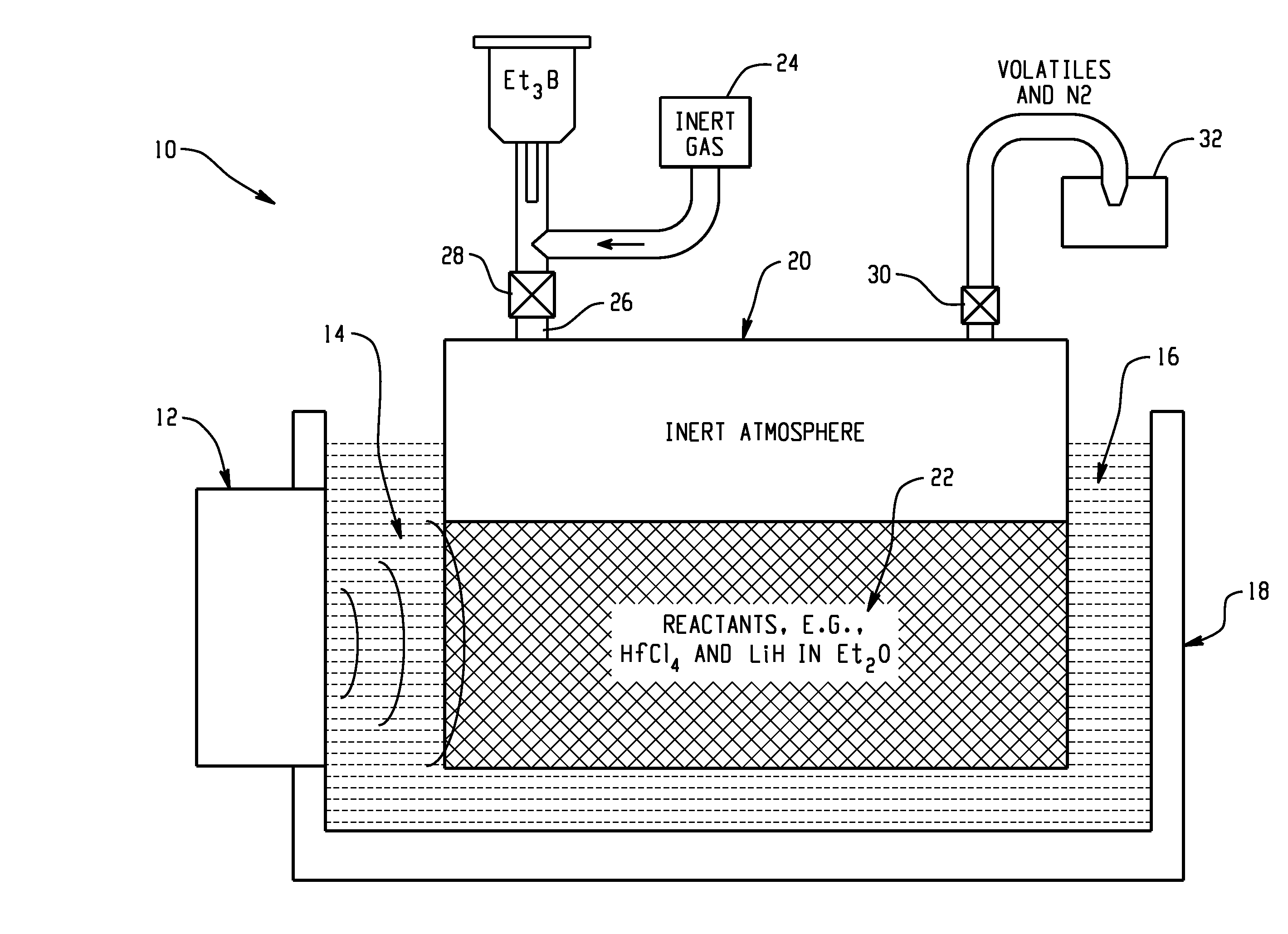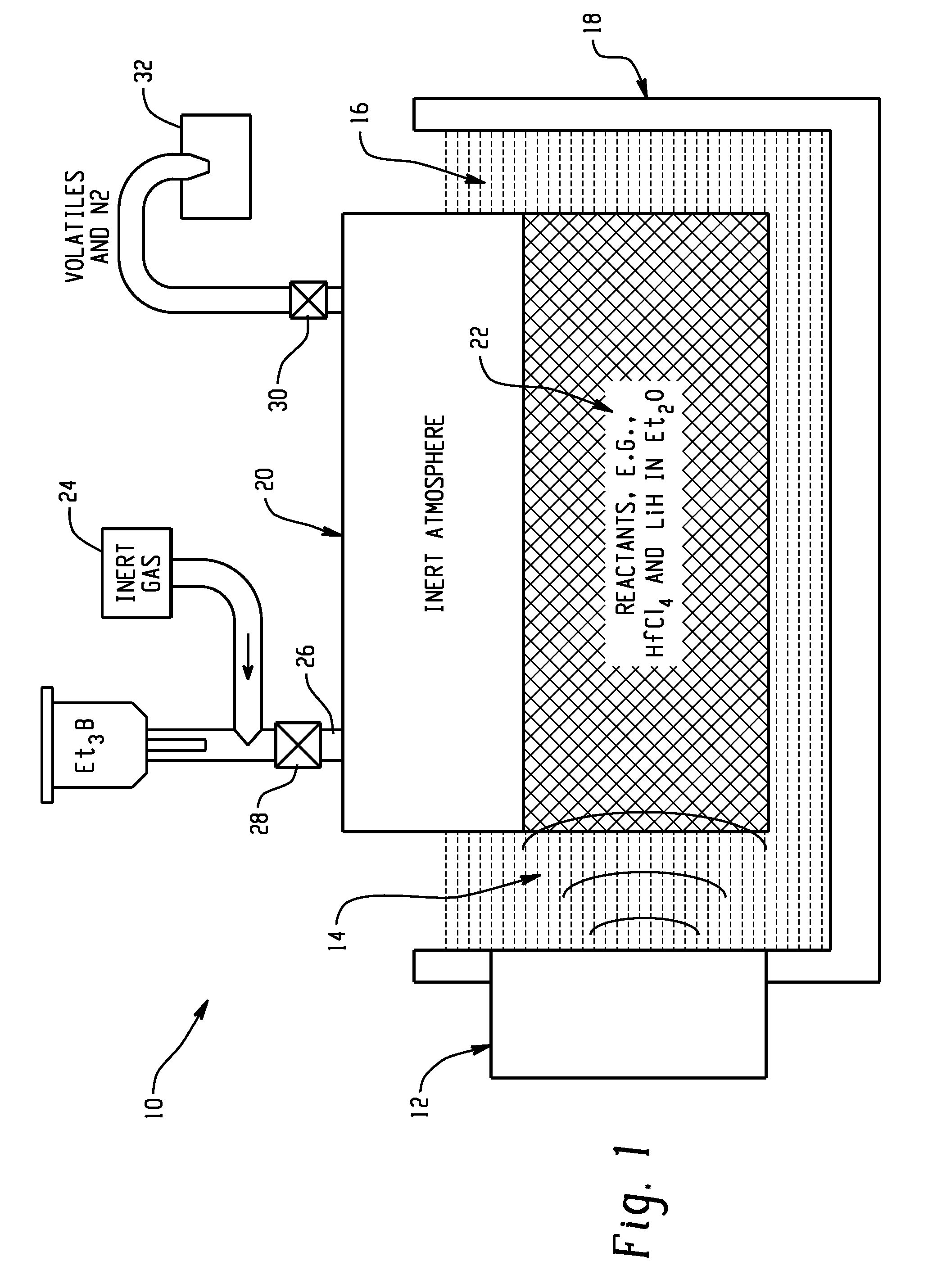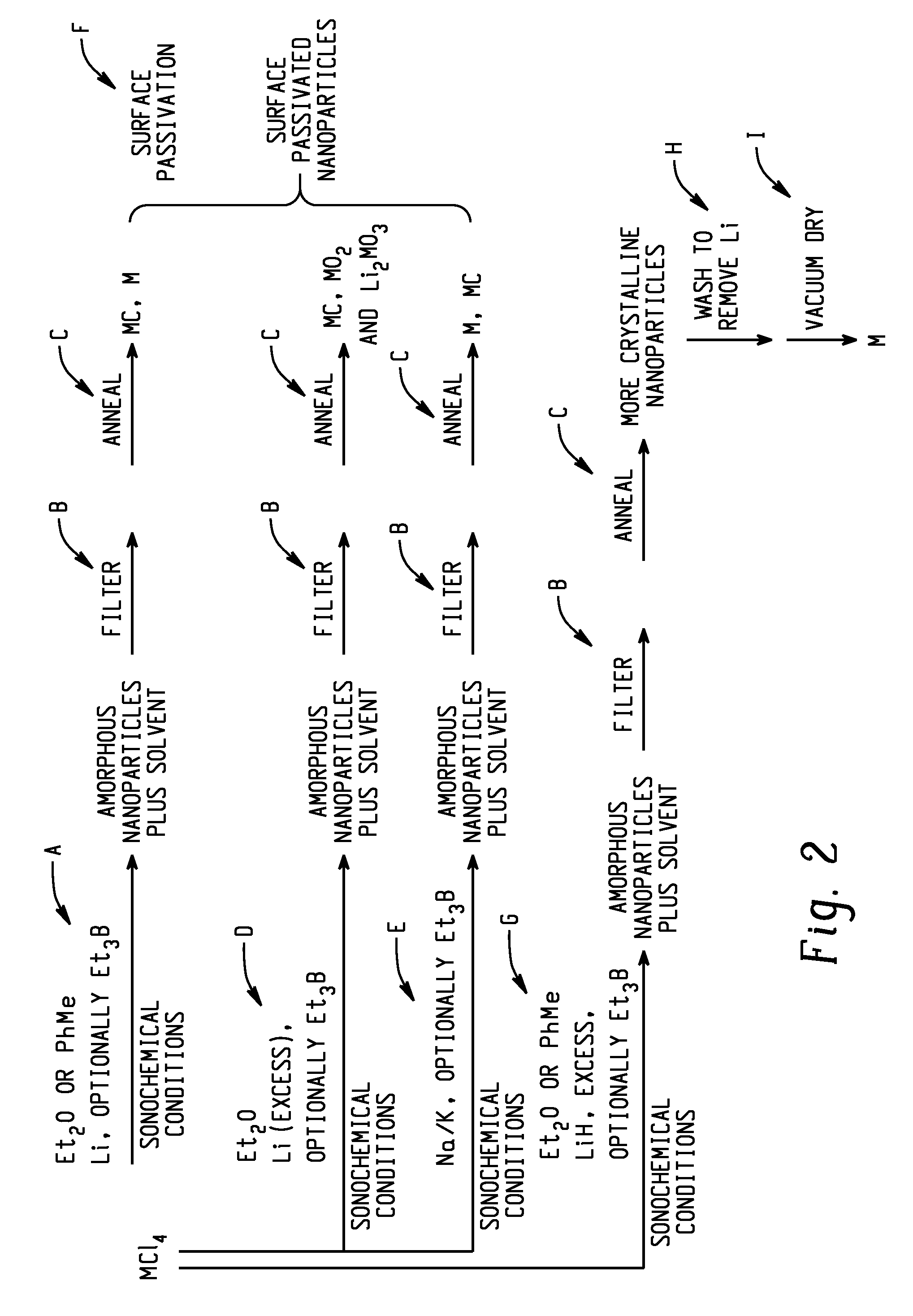Sonochemically mediated preparation of nanopowders of reactive metals
a reactive metal and nanopowder technology, applied in the field of sonochemically mediated preparation of reactive metal nanopowders, can solve the problems of difficult production of air-stable hf nanoparticles and slow reaction speed
- Summary
- Abstract
- Description
- Claims
- Application Information
AI Technical Summary
Problems solved by technology
Method used
Image
Examples
example 1
Synthesis of Hafnium Hydride-Carbide Material and Properties
[0088]In this example, the sonochemically mediated method for the synthesis of reactive metal nanopowders using a benchtop ultrasonic bath is used for preparation of an air-stable nanopowder containing Hf as the reactive metal in a highly reduced state that is kinetically stabilized against self-ignition in air.
[0089]The preparation of amorphous hafnium nanopowder was performed in a solution process by reduction of HfCl4 with LiH in Et2O in the presence of Et3B was carried out with the aid of an ultrasonic bath under an inert atmosphere (FIG. 2, step G). Specifically, the synthesis was started in a VAC Atmospheres, Inc. glovebox under an atmosphere of argon. 20 g of HfCl4 powder was mixed with 5 g of LiH powder in a custom-made 800 mL recovery flask with a built-in 10 inch long condenser neck and a Kontes Teflon valve (size 20) with a side-arm for Schlenk technique manipulations. 350 mL of Et2O were then added to the powder...
example 2
Hafnium and Hafnium Subcarbide Materials by Alkali Metal Reduction
[0117]Hafnium tetrachloride (and tetrabromide) was reduced by various alkali metals in a variety of solvents, using sonication to activate the reaction. The hafnium-based nanopowders prepared using the different solvents and reducing agents are shown below in TABLE 1.
[0118]Sodium-potassium alloy was obtained by combining equal weights of the metals and filtering under inert atmosphere.
[0119]All reagents were handled in a drybox under an Ar atmosphere. All solvents were distilled from Na / K or Na+OCPh2−.
[0120]The reactions produced brown to black solids that were transformed into Hf nanopowders by heat treatment. In each case, the alkali metal(s) was / were added to a mixture of HfCl4 and the solvent in a Pyrex™ bulb in the drybox. The Kontes valve on the bulb was then inserted and closed. The bulb was then sonicated in an ordinary sonic cleaning bath. All reactions of Li powder with HfCl4 in Et2O were vigorous, and were ...
PUM
| Property | Measurement | Unit |
|---|---|---|
| temperature | aaaaa | aaaaa |
| temperature | aaaaa | aaaaa |
| size | aaaaa | aaaaa |
Abstract
Description
Claims
Application Information
 Login to View More
Login to View More - R&D
- Intellectual Property
- Life Sciences
- Materials
- Tech Scout
- Unparalleled Data Quality
- Higher Quality Content
- 60% Fewer Hallucinations
Browse by: Latest US Patents, China's latest patents, Technical Efficacy Thesaurus, Application Domain, Technology Topic, Popular Technical Reports.
© 2025 PatSnap. All rights reserved.Legal|Privacy policy|Modern Slavery Act Transparency Statement|Sitemap|About US| Contact US: help@patsnap.com



